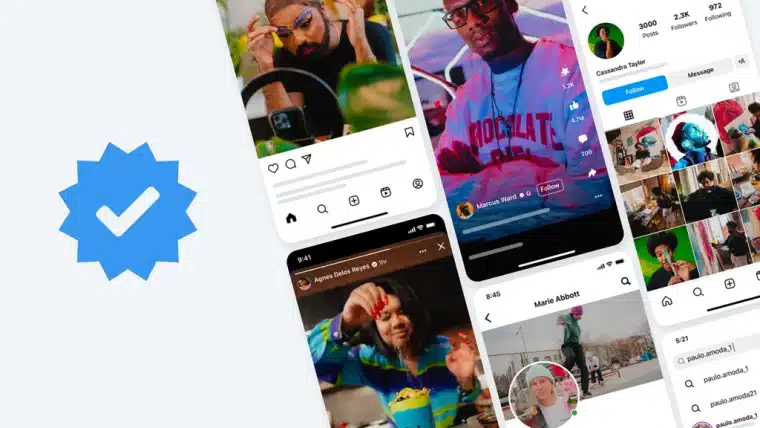
Meta Verified, the new account verification program created by Meta Platforms for both Facebook and Instagram is now available in the United Kingdom according to an update provided by the social media company yesterday morning.
The program will cost £9.99 for UK users who want to access the web version of the apps and £11.99 for those who opt for the mobile versions.
A subscription must be paid separately for each of the two social networks. In addition, a government-issued ID is required to apply for Meta Verified and users must be older than 18 years to be eligible.
The user’s display name must match that of the ID card or otherwise they will not get verified. This has been a controversial issue since the get-go as sex workers and other similar professionals have argued that keeping their identities confidential is essential to their security.
Meta responded by stating that they are working on tools that allow users to obtain the verified badge without expressly revealing their real identities.
Social Media Companies Keep Democratizing Verified Badges
It has been nearly three months since the tech company’s founder and Chief Executive Officer, Mark Zuckerberg, first announced the rollout of Meta Verified via an Instagram post.
The program was first made available to users in Australia and New Zealand and was expanded to US-based creators and users a month after. At that point, Meta announced that it was removing its increased reach feature as it further studied the impact that this had on user-recommended feeds.
In the United States, the cost of Meta Verified is $11.99 for the web version of the two apps and $14.99 for iOS and Android users. It is highly likely that these differentiated tiers are also enforced in the United Kingdom.
The move came just months after the new owner and CEO of Twitter, Elon Musk, rolled out a revamped version of the social network’s subscription program called Twitter Blue that effectively democratized access to the long-sought blue badge.
In the case of Twitter, there was a lot of controversy, and there is still some, related to the verification program as badges have been tweaked and twisted since the new Twitter Blue was first rolled out.
Badges of different colors can now be seen within the social network depicting if the user’s account is a business, a non-profit, a government entity, a Twitter-Blue-paid verified badge, or a legacy badge.
At the same time, old badges have been gradually taken off the platform since April, as Twitter is making celebrities, politicians, and other public figures pay for Blue to prevent impersonation. In the past, these individuals got their verification badges if they were seen as “notable and active” members of the Twitter community.
Around 12M Subscribers Could Sign up for Meta Verified According to BofA
Analysts from Bank of America argued back in February this year that the size of the audience that would opt to subscribe to the Meta Verified program “could be limited” and estimated that around 12 million people may end up signing up for it by the end of this year.
This would result in annual recurring revenues (ARRs) of around $2.2 billion for Meta Platforms (META) assuming that all of the users opt for the most expensive tier – the one that gives them access to the mobile app.
The impact of the program from an economic perspective would be, assuming that these estimates are on point, relatively negligible as that makes up for roughly 1% or less of Meta’s annual global turnover.
Comparatively, the same analysts cited back then that Twitter attracted approximately 300,000 subscribers to its Blue subscription while Snap harnessed 2.5 million subscribers for its Snapchat+ program.
Other Related Articles: